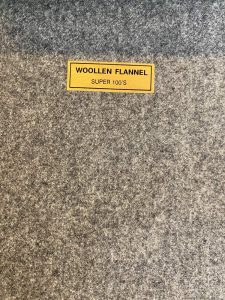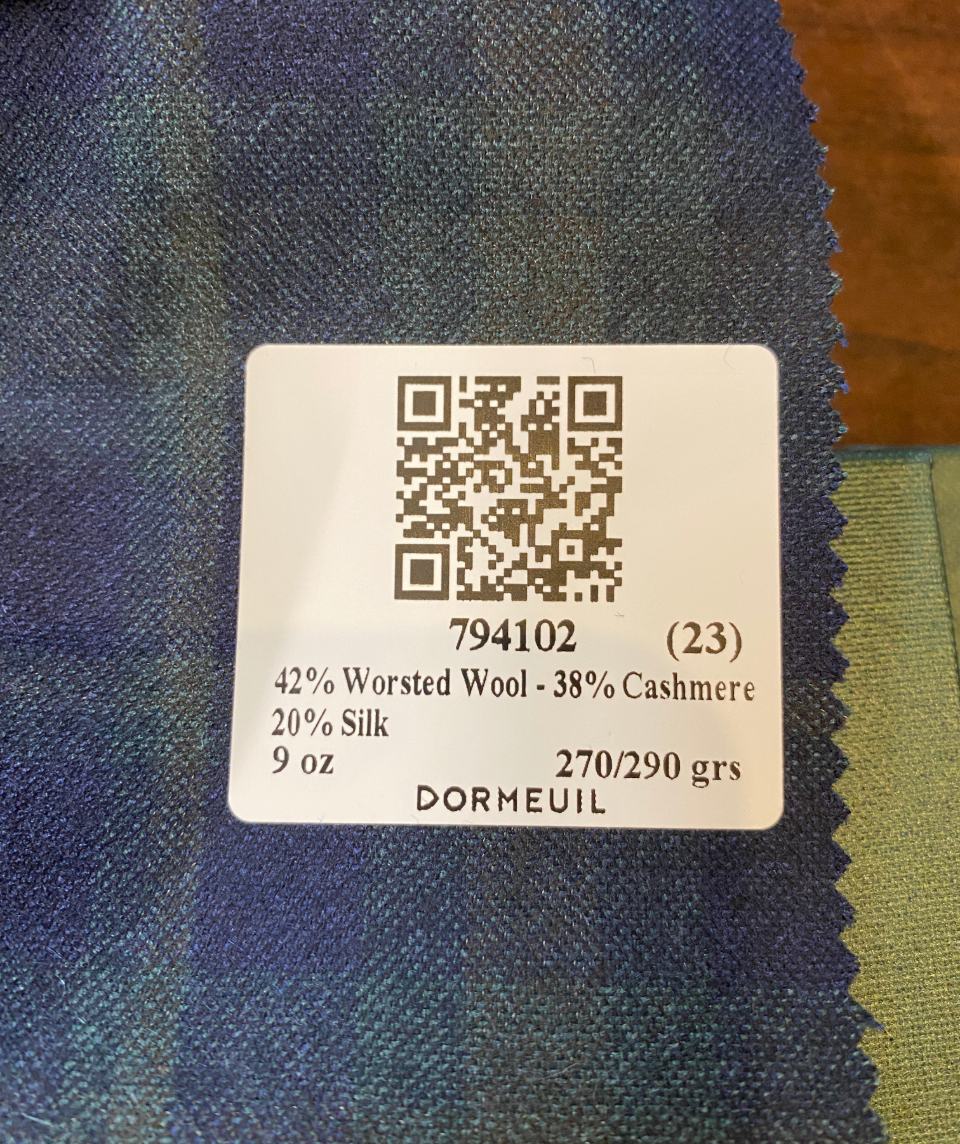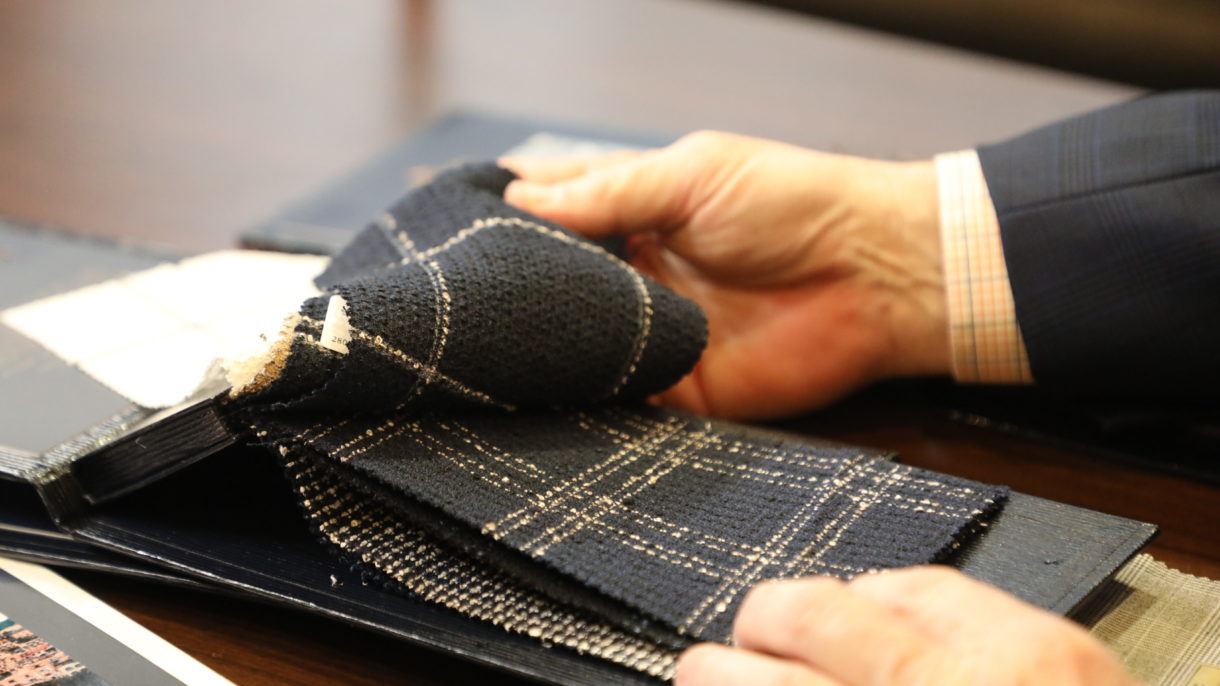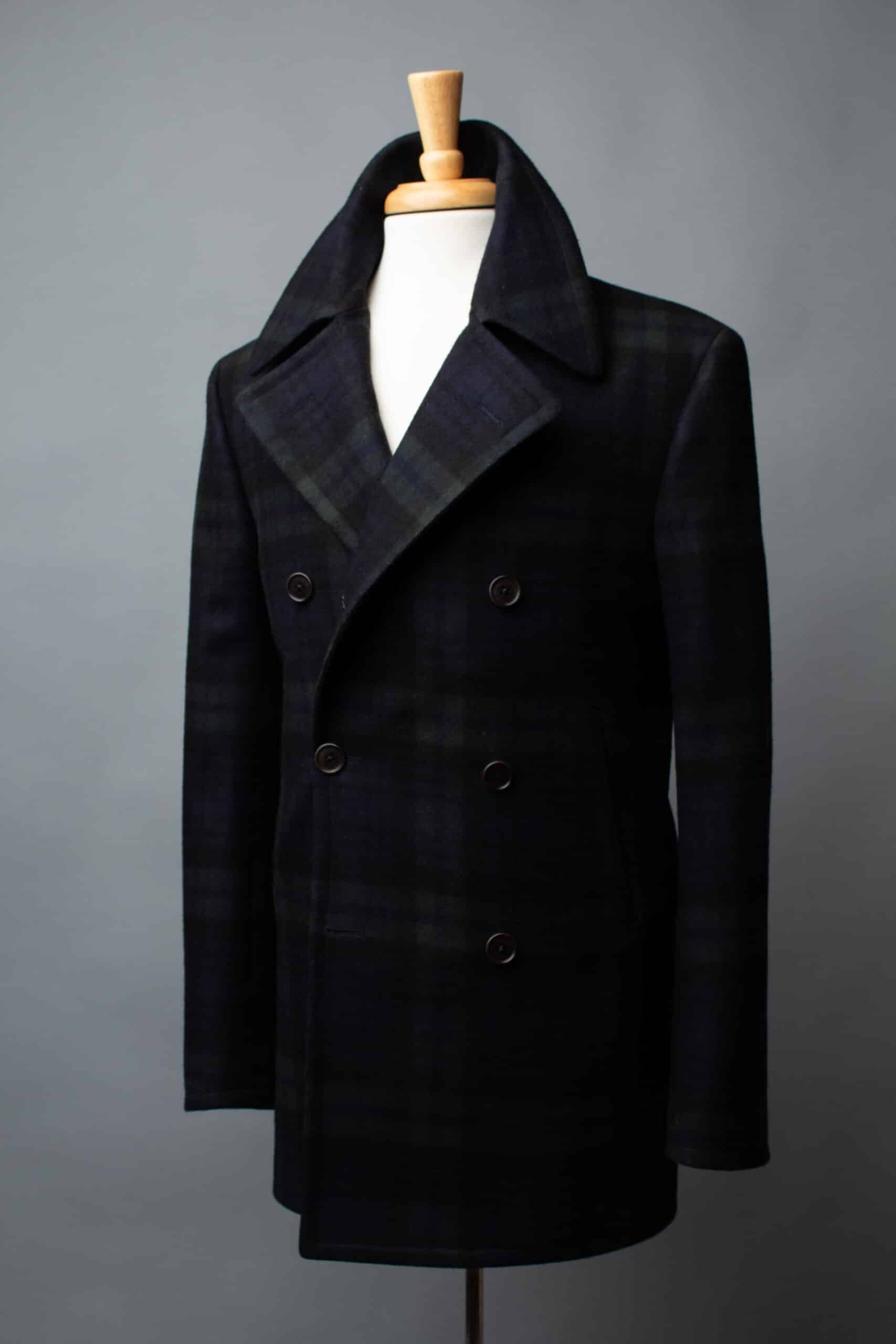Cloth is a major factor in determining a suit’s character, seasonality, price, and overall look. Wool and cashmere are very common materials to use for custom suits, and the cloths have unique properties that make them different from one another. In this post, we’ll go over the difference between wool and cashmere.
Wool & Cashmere – Similar But Not The Same
The world of cloth is vast and varied. Luxury wool fibers often feel like cashmere, while lesser cashmeres don’t have the sumptuous handle that their higher-end wool cousins have. We’ll dive deeper below.
Wool
 Not to be pedantic, but just so we’re on the same page: wool comes from sheep. Herds of sheep are shorn periodically to collect the raw wool from their fleeces. In fact, it’s vital to the health of sheep that their fleeces be removed!
Not to be pedantic, but just so we’re on the same page: wool comes from sheep. Herds of sheep are shorn periodically to collect the raw wool from their fleeces. In fact, it’s vital to the health of sheep that their fleeces be removed!
Wool used for fine bespoke sport jackets and custom suits is on the finer end of the quality spectrum. The best goods are made from long-filament fibers that have high levels of tensile strength (for durability) and crimp (for long-term shape retention). We carry such cloth here at the shop from various fabric mills such as Dormeuil, Scabal, and more. Explore more about choosing luxury cloth here.
While a fabric’s “super” number isn’t the be-all-end-all quality indicator many of us are trained to think it is, high-quality wool tends to start around the Super 120’s mark and scales up from there. As super numbers deal specifically with the fineness of individual fibers, we advise most men to stick around the Super 120 – Super 150 range to maximize the luxurious handle and still maintain good durability.
Generally speaking, the best suiting wool comes from sheep raised in Australia and New Zealand.
Cashmere
 While wool comes from sheep, cashmere comes from goats: cashmere goats, pashmina goats, and some other breeds. The fibers are also referred to as “cashmere wool,” which can be confusing. A good way to think about it is that all cashmere is wool, but not all wool is cashmere. Still, cashmere is finer, lighter, softer, and offers three times the insulating properties as sheep’s wool.
While wool comes from sheep, cashmere comes from goats: cashmere goats, pashmina goats, and some other breeds. The fibers are also referred to as “cashmere wool,” which can be confusing. A good way to think about it is that all cashmere is wool, but not all wool is cashmere. Still, cashmere is finer, lighter, softer, and offers three times the insulating properties as sheep’s wool.
The word “cashmere” itself is the Anglicized spelling of the word “Kashmir.” Similar to seersucker and madras garments, Kashmir shawls originated in India and made their way to Europe while India was still a colony of Great Britain.
Cashmere is prized for its soft, almost fluffy handle, and its warmth. Plenty of men’s garments are made from cashmere. Cashmere scarves, hats, and cashmere-lined leather gloves come to mind. One of our favorite cashmere collections at the moment is Dormeuil’s Cashmere Supreme.
Nowadays, China and Mongolia are the main producers of cashmere worldwide. Other Central Asian countries also contribute to the worldwide total, but only in small percentages compared to China and Mongolia.
Wool, Cashmere, & Bespoke Suits
 In the world of custom tailoring, wool and cashmere play an important role in a cold-weather wardrobe. Wool comprises the large majority of the cloth we use for tailored garments. We often use cashmere to craft clothing when the client would like a more luxurious feel.
In the world of custom tailoring, wool and cashmere play an important role in a cold-weather wardrobe. Wool comprises the large majority of the cloth we use for tailored garments. We often use cashmere to craft clothing when the client would like a more luxurious feel.
Wool and cashmere are available in various weights to accommodate the changing seasons. It’s true that cashmere insulates well, but it also breathes exceptionally well. Lightweight, worsted cashmere will make one of the most beautiful sport coats you’ve ever worn that you can still wear in warmer weather.
 Combining wool and cashmere in a single cloth is also quite common. Fabric mills do this to increase the luxury feel of their offerings without increasing the price too much. It’s perfectly normal to see 90/10 or 80/20 wool-to-cashmere ratios across fabric collections.
Combining wool and cashmere in a single cloth is also quite common. Fabric mills do this to increase the luxury feel of their offerings without increasing the price too much. It’s perfectly normal to see 90/10 or 80/20 wool-to-cashmere ratios across fabric collections.
Your Next Garment
As you might imagine, we have plenty of wool and cashmere cloth to look through when making your next garment. We encourage you to mark your calendars for our trunk show with Scabal, and of course reach out to us in the meantime at either 215-310-0219 or info@henrydavidsen.com. We look forward to hearing from you.



